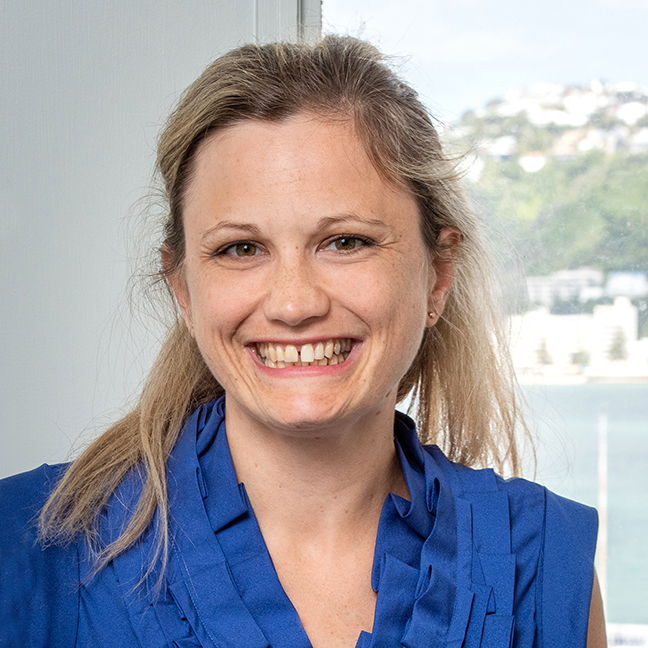A New Frontier for Disaster Insurance
Associate Professor Rebecca Bednarek’s global research project qualitatively explores the paradoxes of reimagining disaster insurance.
The climate emergency poses existential questions such as how do we prepare for and respond to a world where natural disasters like hurricanes, floods, and earthquakes are becoming more frequent and severe? The financial and human tolls are huge for a wealthy (but risk-exposed) country like Aotearoa New Zealand, and even more daunting for those countries with comparatively fewer resources through which to respond. In these contexts, governments might not have the budget to draw on to alleviate suffering in the immediate aftermath of a disaster and aid may also be delayed. As one of the participants in our study described: “After the hurricane, it was so bad that the government couldn’t even pay the public servants… even the police started looting…doners come to the rescue but it takes quite a while”. However, innovative risk-pooling models offer a promising way forward.
Our research brings attention to an important financial mechanism, but one not many of us perhaps know about: multi-sovereign risk pools. Supported by development actors like the World Bank, multiple countries purchase parametric insurance via these pools from the global financial market, providing them with immediate financial resources should a disaster hit. Think of it as setting a financial "alarm" that goes off the moment a disaster of a pre-defined type and magnitude strikes, delivering funds quickly and efficiently to purchasing governments when they’re needed. Together with my co-authors, Paula Jarzabkowski, Konstantinos Chalkias, and Eugenia Cacciatori, we dive into pioneering risk pools in the Caribbean, Africa, and the Pacific. Originally established to protect developing nations, these risk pools may hold valuable lessons for wealthier countries facing escalating climate risks.
Data-Driven Insights. To uncover the inner workings of these risk pools, the challenges they face, and how they adapt and evolve over four years we conducted 135 interviews around the globe. We also observed 31 key events, and analyzed 385 reports.
What Makes a Risk Pool Effective? So, why do these risk pools matter, and how do they work? Here are some key insights from our research.
- Speed of Payouts Using Parametric Triggers: Risk pools use specific triggers—like wind speed or rainfall levels—to release funds almost instantly when disaster hits. As one participant put it, “We saw the pay-out after the [hurricane]. It was very quick. The president declared a state of emergency, and we put the money in an emergency budget. Then the government could use this money to respond." Quick payouts mean governments can act immediately, maintaining order and helping communities recover faster. For example, after Hurricane Maria, Dominica received a £13 million payout within 14 days, and Zimbabwe's £1.2 million payout in 2020 helped over 160,000 families at the start of a drought.
- Pooling risk with flexibility: Risk pools enable the governments of smaller countries access global insurance markets on better terms as a more diversified collective. Indeed, most would likely be too small to go to the global markets themselves. However, within the pool they also customize their coverage to fit their unique needs in terms of risk profile and budget, boosting both regional resilience and local preparedness and understanding. As our participants said, risk transfer was an important part of the product, but so was the “technical-know” gained to “act independently” via building a deeper understanding of risk and readiness.
- Navigating Paradoxes Through Knotting: Use of market-based solutions to address societal challenges like disaster response can seem contradictory. They offer fast financial relief but could appear misaligned with humanitarian goals. And indeed, conflicting demands across their web of stakeholders need working through for the pool to function. Our research shows that these opposing objectives are interwoven—or “knotted”—through the interactions of those involved. Imagine a tightrope walker making constant adjustments to stay balanced—that’s how these risk pools operate, continuously attempting to adapt to new data, refining models, and responding to the evolving needs of member countries.
- Adapting Through Disequilibrium: These solutions are far from perfect, and gaps in cover exist. Indeed, tensions between the multiple stakeholders keep the system at the edge of disequilibrium (at risk of unravelling). Yet, it is the moments of crisis and imbalance that spark the significant innovations to improve these solutions over time.
Applying the Model: A Broader Vision & Call to Action
The success of multi-country risk pools in delivering rapid payouts to the governments of lower-income countries shows that coordinated action is possible even if remaining challenging to execute. These pools prove that governments, global markets, and development organizations can work together to support those who need it most.
In a world reshaped by the climate emergency, the need for scalable, innovative, and equitable approaches to disaster management has never been greater. Wealthier countries—and regions or states within them—could also use some of the lessons of these models. For example, one question it allows me to ask (albeit not answer) in whether parametric solutions and pooling mechanisms hold potential for iwi in protecting their marae and taonga, and how other stakeholders could collaborate to help facilitate that.
Further reading. Please refer to our published works. This includes our Academy of Management Journal article (the basis for this summary) and our Open Access book Disaster Insurance Reimagined based on an ever wider global dataset and covering a wider array of solutions.
To view the infographic based on this article, click here.

